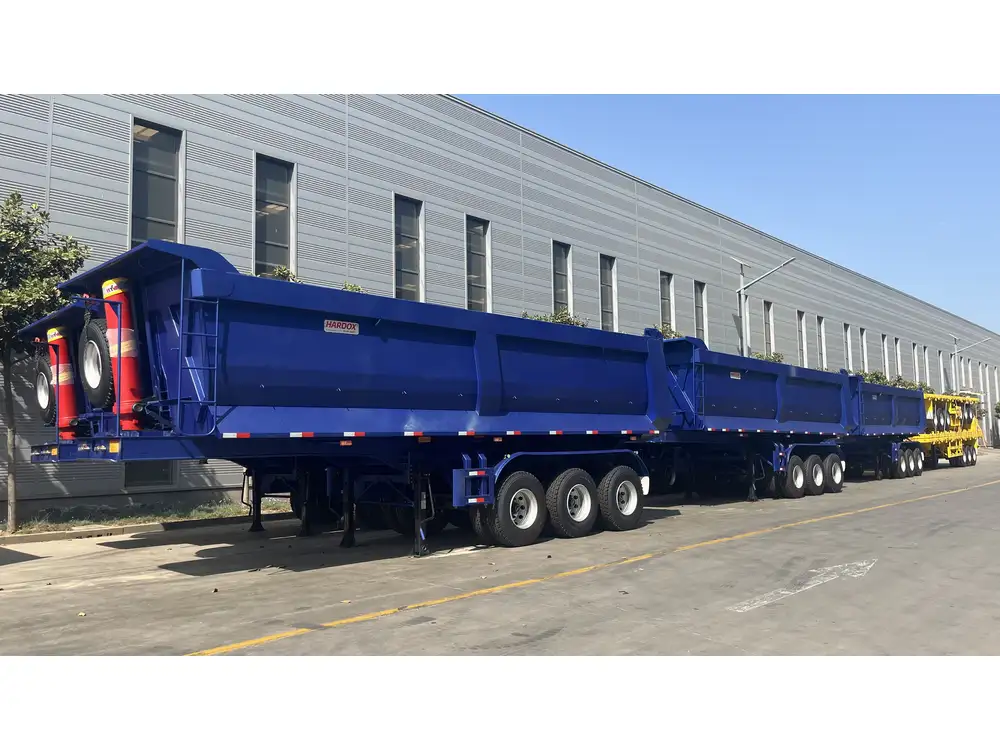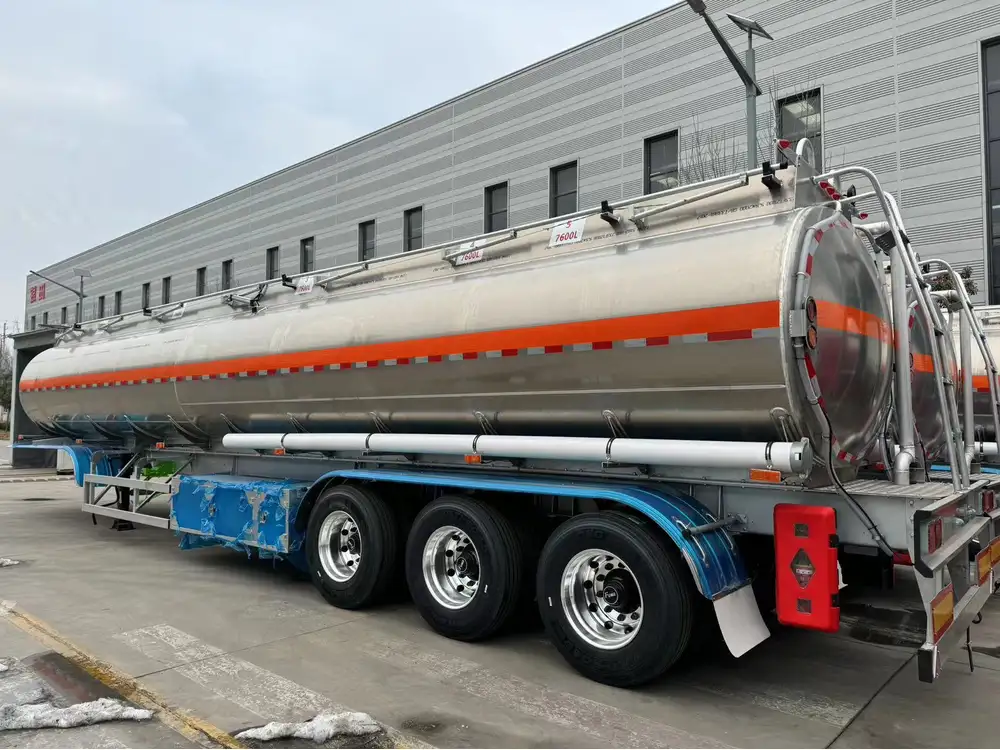Maintaining the hydraulic system of a dump trailer is crucial for ensuring its longevity and optimal performance. Regularly changing the hydraulic fluid not only extends the life of your equipment but also enhances safety and reliability during operation. This guide will provide detailed, step-by-step instructions on how to effectively change the hydraulic fluid in your dump trailer.
Table of Contents
- Understanding Hydraulic Fluid
- Tools and Materials Needed
- Safety Precautions
- Step-by-Step Procedure
- 4.1. Preparing the Trailer
- 4.2. Draining Old Hydraulic Fluid
- 4.3. Replacing the Hydraulic Filter
- 4.4. Filling with New Hydraulic Fluid
- 4.5. Bleeding the Hydraulic System
- Post-Change Inspection and Maintenance
- Common FAQs
- Final Thoughts
Understanding Hydraulic Fluid
Hydraulic fluid plays a pivotal role in the efficient operation of dump trailers. It transmits power and lubricates the hydraulic components, reducing wear and tear. Using the correct type of hydraulic fluid, whether it is mineral oil-based or biodegradable fluid, is essential for optimal performance and equipment protection.

Key Properties of Hydraulic Fluid
| Property | Importance |
|---|---|
| Viscosity | Affects fluid flow and energy efficiency. |
| Lubricating Ability | Reduces friction and wear on components. |
| Temperature Stability | Maintains performance under varying temperatures. |
| Corrosion Resistance | Protects components from rust and degradation. |
Tools and Materials Needed
Ensure you are equipped with the following tools and materials before you begin the hydraulic fluid change:
Tools
- Hydraulic fluid pump
- Wrench set
- Screwdrivers (flathead and Phillips)
- Pliers
- Oil catch pan
- Funnel
- Clean rags

Materials
- New hydraulic fluid (consult your trailer’s manual for specifications)
- Replacement hydraulic filter (if applicable)
- Filter wrench (if needed)
Safety Precautions
Work safely to prevent accidents and injuries during maintenance. Here are essential safety precautions:
- Wear Protective Gear: Always wear gloves, goggles, and appropriate work attire.
- Work in a Ventilated Area: Ensure sufficient ventilation to avoid inhaling harmful fumes from hydraulic fluid.
- Use Appropriate Lifting Equipment: If necessary, use jack stands to stabilize the trailer.
- Disconnect Power Sources: Ensure the trailer is not connected to any power supply before starting the work.
Step-by-Step Procedure

4.1. Preparing the Trailer
- Park the Trailer on Level Ground: This ensures that fluid drains properly and minimizes spillage.
- Engage the Parking Brake: Stabilize the trailer to prevent movement.
- Remove the Trailer’s Bed: If applicable, lower the dump trailer bed completely.
4.2. Draining Old Hydraulic Fluid
- Locate the Drain Plug: Identify the drain plug on the hydraulic reservoir tank. Consult your user manual if unsure.
- Position the Oil Catch Pan: Place it under the drain plug to collect the old fluid.
- Remove the Drain Plug: Using the appropriate wrench, carefully unscrew the drain plug. Allow the old hydraulic fluid to completely drain into the pan.
- Inspect the Drain Plug: Check for any signs of wear or damage; replace if necessary.
4.3. Replacing the Hydraulic Filter
- Locate the Hydraulic Filter: Identify the filter’s location, usually near the hydraulic pump.
- Remove the Old Filter: Use a filter wrench if necessary. Be cautious, as some fluid may still be in the filter.
- Install the New Filter: Apply a thin layer of new hydraulic fluid to the rubber seal of the new filter. Screw it on by hand until snug.
- Tighten as Necessary: Do not overtighten the filter; refer to manufacturer specifications.

4.4. Filling with New Hydraulic Fluid
- Find the Fill Port: Commonly located at the top of the hydraulic reservoir.
- Using a Funnel: Insert the funnel into the fill port to avoid spills.
- Add New Hydraulic Fluid: Begin filling the reservoir with the specified hydraulic fluid. Monitor the fill level using the built-in gauge, if available.
- Do Not Overfill: Maintain the fluid level within the recommended range.
4.5. Bleeding the Hydraulic System
- Reconnect the Power Source: If applicable, re-engage any power mechanisms.
- Cycle the Hydraulic System: Activate the hydraulic lift several times to remove any air trapped in the system.
- Check Fluid Level Again: Monitor and top off the hydraulic fluid as necessary after bleeding.
- Inspect for Leaks: Examine all connections for any signs of leaking hydraulic fluid.
Post-Change Inspection and Maintenance
Once you have successfully changed the hydraulic fluid, it’s essential to conduct a thorough inspection:
- Inspect Hydraulic Lines: Look for signs of wear, damage, or leaks.
- Check Connections and Fittings: Ensure all connections are tight and secure.
- Test the Operation: Operate the dump trailer and monitor its performance; listen for unusual noises or behavior.

Maintenance Tips
- Perform fluid checks regularly (every 3-6 months).
- Change hydraulic fluid at least once a year, or more frequently if used heavily.
- Keep the hydraulic system clean and free of contaminants.
Common FAQs
What type of hydraulic fluid should I use?
- Refer to your dump trailer’s manual for recommended fluid types and specifications.
How often should I change the hydraulic fluid?
- It is advisable to change hydraulic fluid every 1,000 operating hours or annually, whichever comes first.
What happens if I don’t change hydraulic fluid?
- Neglecting to change hydraulic fluid can lead to reduced performance, overheating, and potential damage to hydraulic components.
Can I mix different types of hydraulic fluid?
- Mixing fluids can lead to chemical reactions that may alter performance. Always stick to the specified type from the manufacturer.
Final Thoughts
Changing the hydraulic fluid in your dump trailer is a straightforward but crucial maintenance task that every owner should perform diligently. By following this detailed guide, you ensure your hydraulic system functions efficiently, thereby prolonging the life of your dump trailer and enhancing its operational performance. Regular maintenance not only saves you money in repair costs down the line but also contributes to safer operation on site.
Be proactive about your maintenance schedule and always consult your owner’s manual for specific recommendations related to your dump trailer’s make and model. Keep your dump trailer running smoothly by prioritizing hydraulic fluid changes as part of a comprehensive maintenance plan. Your trailer will thank you for it.



